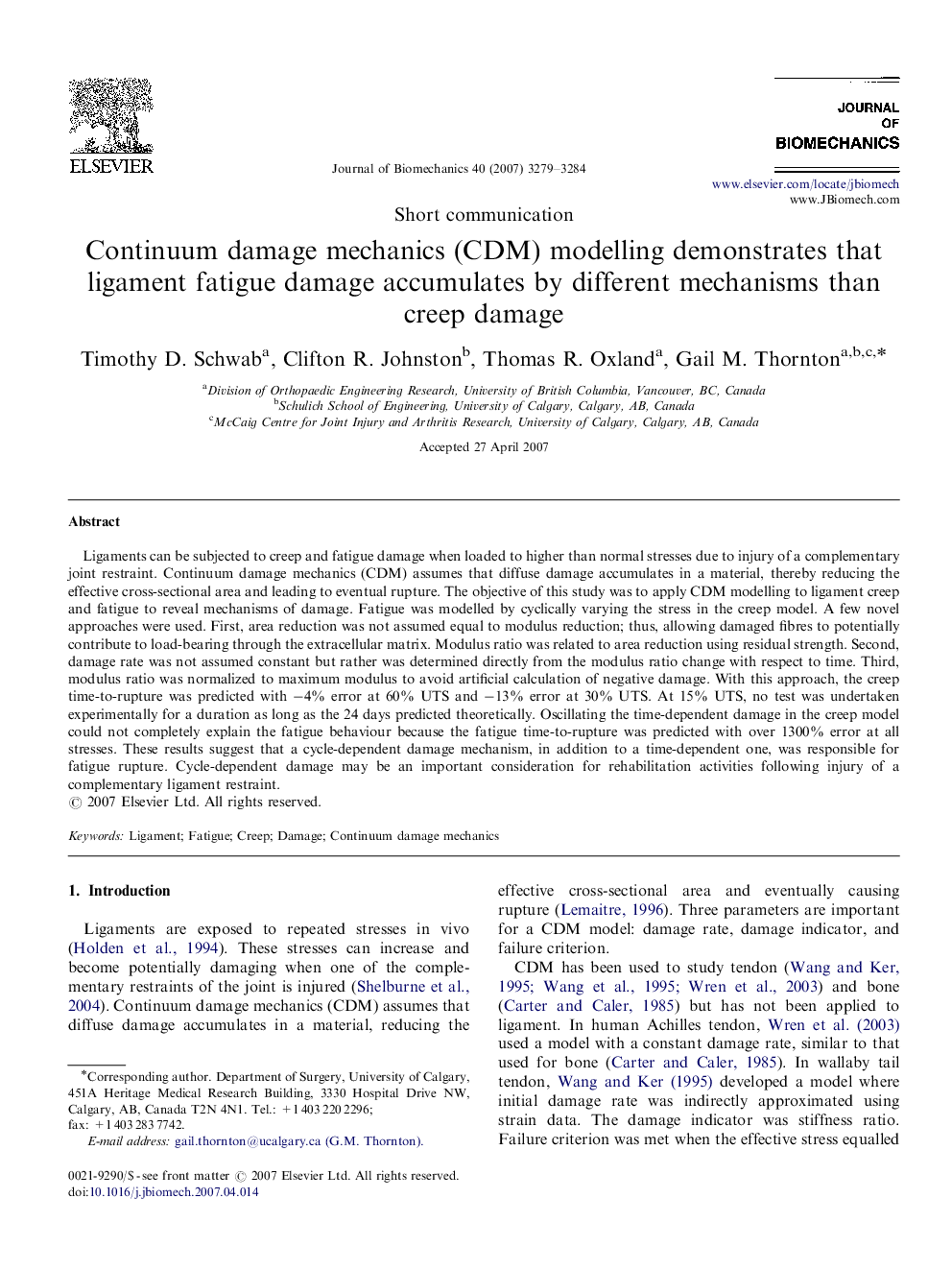| Article ID | Journal | Published Year | Pages | File Type |
|---|---|---|---|---|
| 875320 | Journal of Biomechanics | 2007 | 6 Pages |
Ligaments can be subjected to creep and fatigue damage when loaded to higher than normal stresses due to injury of a complementary joint restraint. Continuum damage mechanics (CDM) assumes that diffuse damage accumulates in a material, thereby reducing the effective cross-sectional area and leading to eventual rupture. The objective of this study was to apply CDM modelling to ligament creep and fatigue to reveal mechanisms of damage. Fatigue was modelled by cyclically varying the stress in the creep model. A few novel approaches were used. First, area reduction was not assumed equal to modulus reduction; thus, allowing damaged fibres to potentially contribute to load-bearing through the extracellular matrix. Modulus ratio was related to area reduction using residual strength. Second, damage rate was not assumed constant but rather was determined directly from the modulus ratio change with respect to time. Third, modulus ratio was normalized to maximum modulus to avoid artificial calculation of negative damage. With this approach, the creep time-to-rupture was predicted with -4%-4% error at 60% UTS and -13%-13% error at 30% UTS. At 15% UTS, no test was undertaken experimentally for a duration as long as the 24 days predicted theoretically. Oscillating the time-dependent damage in the creep model could not completely explain the fatigue behaviour because the fatigue time-to-rupture was predicted with over 1300% error at all stresses. These results suggest that a cycle-dependent damage mechanism, in addition to a time-dependent one, was responsible for fatigue rupture. Cycle-dependent damage may be an important consideration for rehabilitation activities following injury of a complementary ligament restraint.
